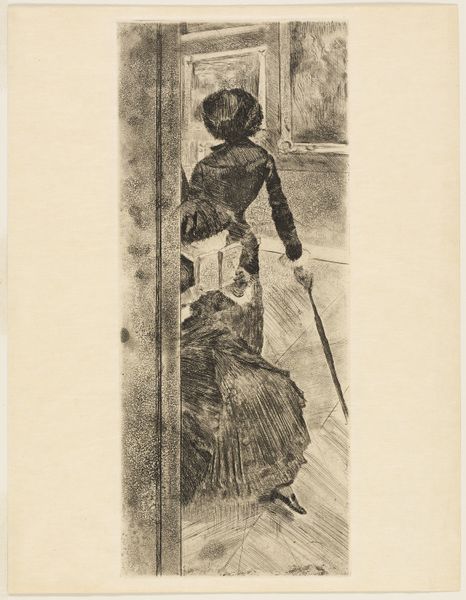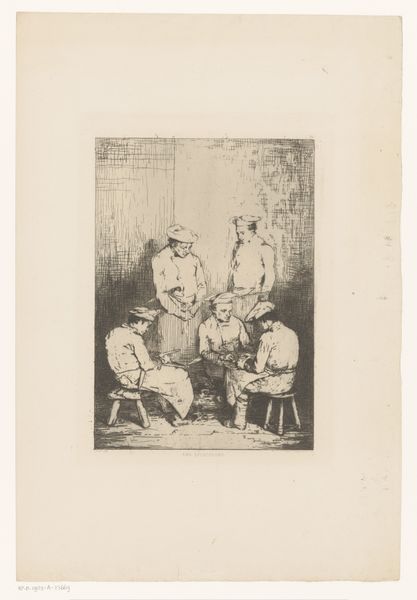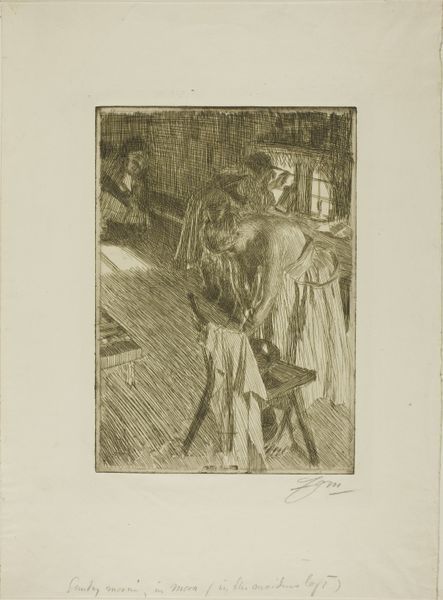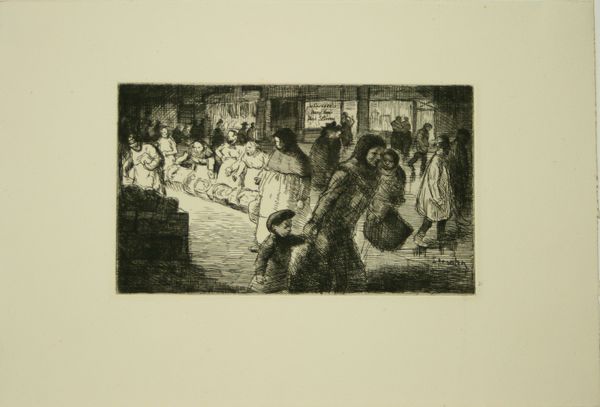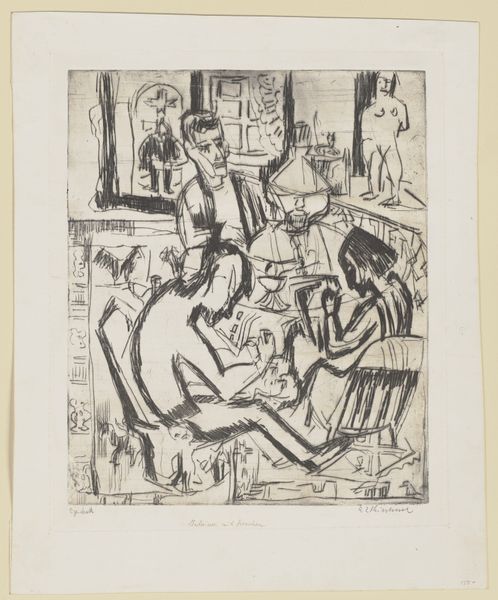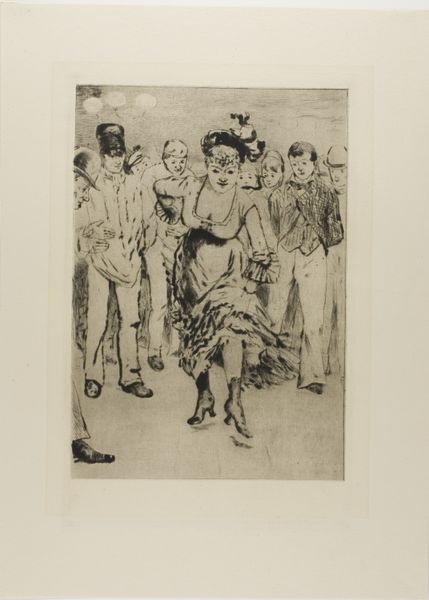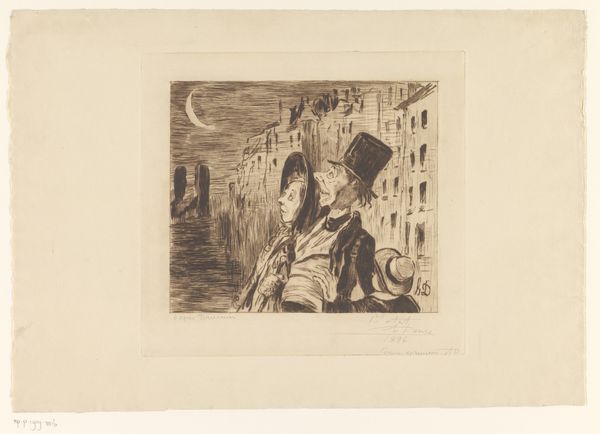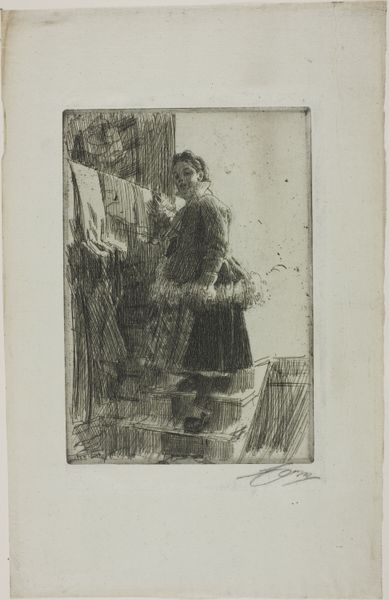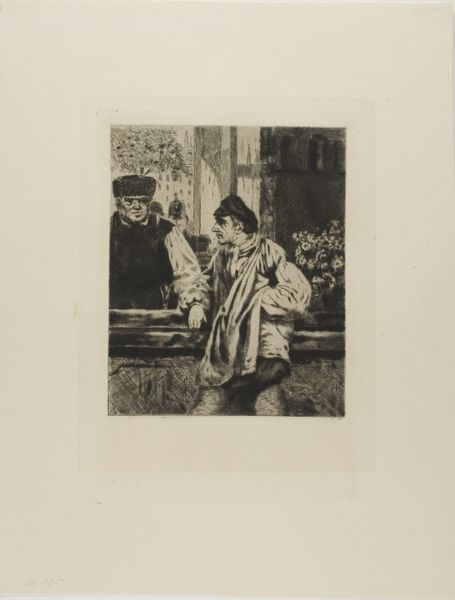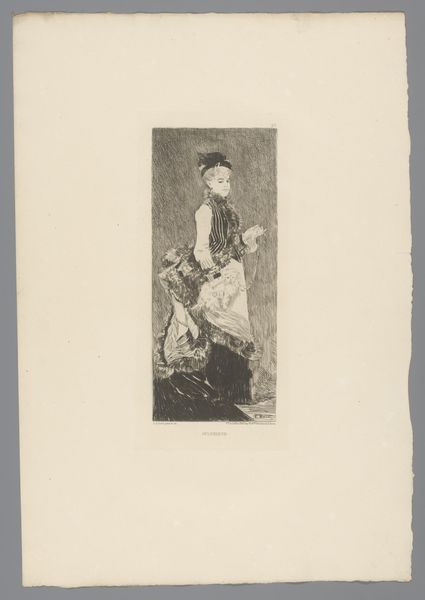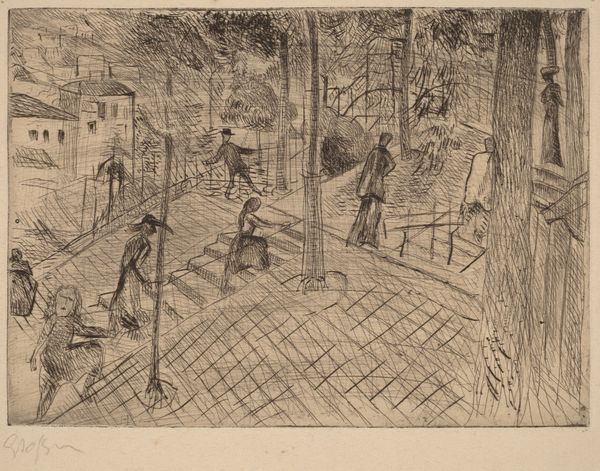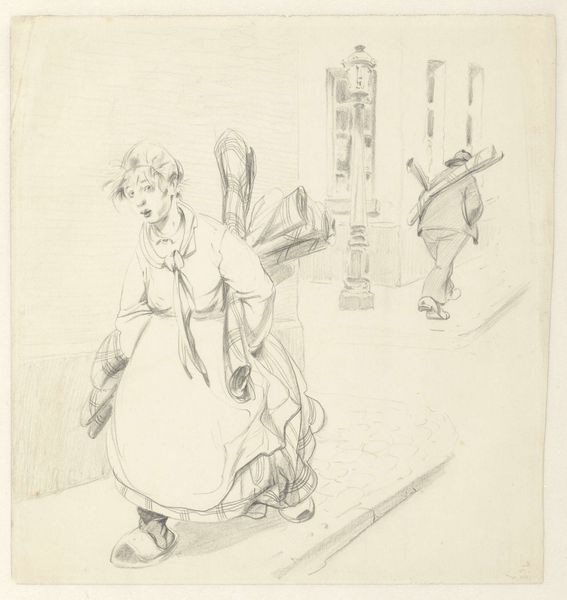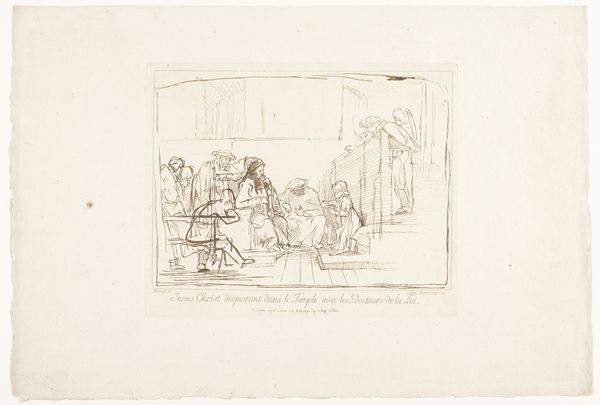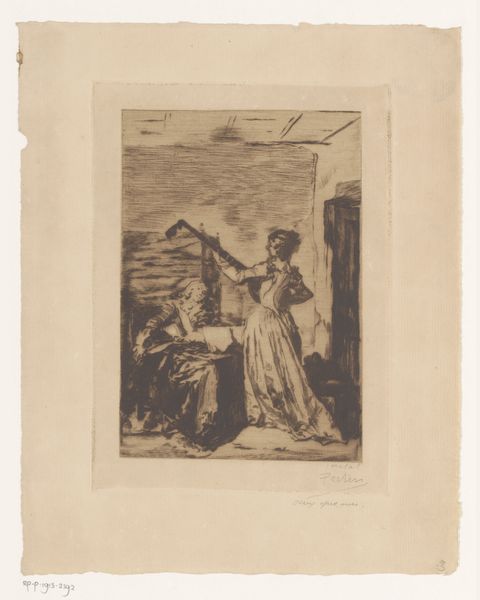
Plate from l'Assommoir (women ironing, man seated before a woodstove) 1879
0:00
0:00
drawing, print, etching, paper
#
drawing
# print
#
etching
#
paper
#
france
#
genre-painting
#
realism
Dimensions: 240 × 227 mm (image); 279 × 229 mm (plate); 402 × 315 mm (sheet)
Copyright: Public Domain
Curator: Standing before us, we have Gaston La Touche’s etching from 1879, a print on paper titled, Plate from l'Assommoir (women ironing, man seated before a woodstove). It is currently part of the collection at The Art Institute of Chicago. Editor: My first impression? Weariness. An overall sense of toil permeates the image. You can almost smell the heat from the stove. Curator: Absolutely. La Touche masterfully uses the etching technique to evoke that feeling. Look at the dense, almost chaotic network of lines, particularly around the woman ironing and the woodstove. It emphasizes the heat, the steam, and the overall oppressive atmosphere. The sketch shows some aspects of the Realism movement. Editor: The composition is intriguing, isn't it? The woodstove acts as a sort of vertical axis, dividing the space. On one side, the working woman—motion, activity, near exhaustion. On the other, the seated man—repose, passivity, inertia? Is that reading too much into it? Curator: Not at all. This division highlights traditional gender roles within the domestic space. The woman's bowed posture and the stove dominate our view while the male figure on the left is isolated. Editor: Also, notice the faces, they seem drawn to observe the viewer. Everyone is in awareness, including children, they seem to be waiting in suspense of something. Curator: Precisely. I agree with your read. I interpret it as not only their immediate social dynamics but speaks to the socioeconomic constraints within the setting and era as well. It reminds me how artworks, like these, are visual diaries and give us glimpses of lives, moments of struggle, captured across time and space. Editor: And that’s exactly why looking closely, really *seeing*, is so vital, don’t you think? To give weight, context, depth to these moments. Curator: Indeed. La Touche’s work transforms what might be seen as an ordinary domestic scene into a powerful commentary on labor, gender, and the human condition. Editor: A subtle snapshot with weighty implications then, expertly rendered with such deceptively simple lines. It really makes you ponder about all of the stories an image like this carries within it.
Comments
No comments
Be the first to comment and join the conversation on the ultimate creative platform.
